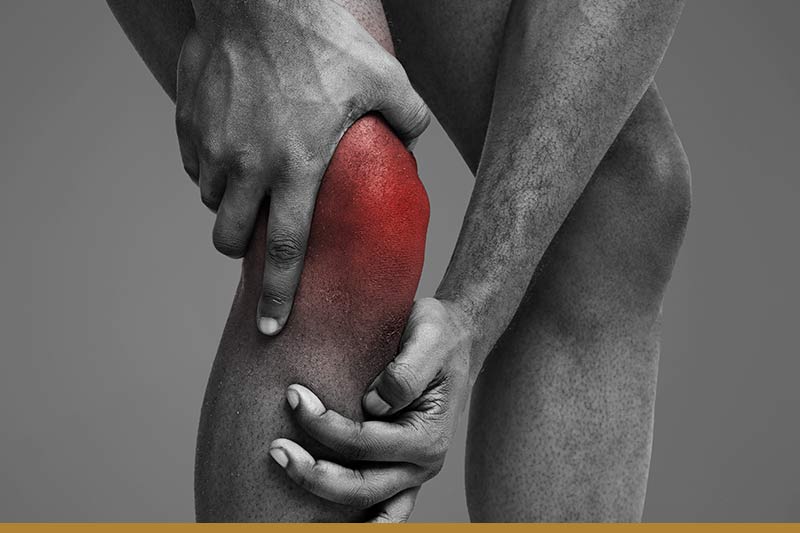Cold water therapy is a popular method for athletes and others who wish to reduce pain, inflammation, and stress. The treatment may also promote other aspects of our health, including cardiovascular, mental, and immune functions, but research is still in the early phase and hasn’t yet confirmed the therapy’s long-term benefits.
This article explains how cold water therapy works, what benefits it provides (according to anecdotal and current scientific evidence), and recommends safe ways to try the treatment.

Cold water therapy involves submerging oneself in cold water for therapeutic purposes. It can be anything from bathing in cold water at home, swimming in an ice-cold lake, or paying for a session at a wellness facility with cold-plunge tanks. The water temperature is typically between 50 and 60°F, and the sessions are short.
Professional athletes frequently use cold water therapy to speed up recovery after intense physical exertion. The treatment is also gaining popularity outside of sports due to its significant medical potential. Anecdotal evidence and limited research suggest that cold water therapy improves cardiovascular and mental health and increases resilience to stress, potentially strengthening immune function.
Since ancient times, people have used cold water therapy to alleviate pain and swelling from injuries, increase energy, and promote relaxation. There are accounts of this practice in ancient Greece, Rome, Egypt, China, Scandinavia, and Eastern Europe. Modern-day scientists like Edgar A. Hines Jr. and D. H. Clarke advanced hydrotherapy and cold water therapy research, examining the body’s reaction to cold water exposure.
In the past few decades, there have been several studies on the effects of cold water therapy on athletic performance and muscle recovery. Research is still in the early stages and doesn’t provide solid proof of the many health claims related to this type of therapy. However, extensive anecdotal evidence of the treatment’s positive effects has made it a standard practice among athletes and a popular supplemental therapy for other patients.
The patient typically submerges the whole body up to the neck in cold water, either for several brief sessions or one continuous session lasting 10 to 15 minutes. There is no consensus yet on the optimal water temperature or the amount of time spent in cold water. Doctors recommend that those new to the treatment gradually increase the period in cold water.
The therapy decreases the core temperature, constricts blood vessels, blocks pain and swelling, and directs blood flow to vital organs, where the blood gathers more oxygen and nutrients. Once the patient is out of the cold water, the blood vessels expand again and receive fresh, oxygenated blood. The process helps expel waste (e.g., lactic acid), reduce inflammation, increase energy, and promote recovery.
There are four standard types of cold water therapy.
Cold water immersion (CWI) involves submerging the body in cold water for up to 15 minutes. Ice baths are a type of cold water immersion and may use temperatures lower than 50°F.
Cold showers involve showering with cold water for 5-15 minutes. This type of cold water therapy is ideal for beginners. They should start with 30-second sessions and gradually increase the time.
Contrast water therapy involves showering or immersing oneself in hot and cold water alternately. Different studies use different time increments for the hot/cold water intervals. Patients typically spend one minute in cold water and three or four minutes in hot water. The whole process takes about 15-40 minutes.
Named after the Danish athlete, the Wim Hof method merges three wellness practices – specific breathing patterns, cold water therapy, and meditation – to lower stress and improve cardiovascular function. Wim Hof and his method have significantly popularized cold water therapy.
Scientific evidence for cold water therapy’s health benefits is inconclusive. Researchers don’t fully understand the mechanisms behind its positive effects. However, several small studies and vast anecdotal evidence indicate the treatment’s significant potential in alleviating pain and improving different health parameters.
Exposure to cold water causes the blood vessels to constrict, temporarily increasing blood pressure and heart rate. The vessels expand as the body warms up again, boosting blood circulation. The long-term implications of this effect are unclear, but it may help improve cardiovascular health.

When the blood vessels are constricted, the blood moves to the internal organs and gathers oxygen and nutrients. When the blood vessels dilate, the nutrient-rich, oxygenated blood returns to the tissues and muscles, helping to reduce inflammation, pain, and muscle soreness.
Professional athletes often experience delayed-onset muscle soreness (DOMS) 12-24 hours after intense workouts. Cold water therapy after physical exertion helps alleviate DOMS.
Some studies show reduced cortisol levels after cold water therapy, suggesting the treatment has a stress-modulating capacity. Researchers speculate that adapting to stress from the cold may help us manage other stressors more effectively, fostering a more resilient state and improving immune function over time.
Exposure to cold water provokes a cold shock response, characterized by cardio-respiratory reactions that include increased release of adrenaline, noradrenaline, and endorphins. An elevation of these neurotransmitters may be responsible for the reported mental benefits of cold water therapy, including increased alertness, lower tension and nervousness, and improved mood.
Cold water therapy lowers the body’s core temperature. As the body struggles to warm up, it activates brown fat cells, which burn calories to generate heat. It may also convert white adipose tissue, which stores fat, into brown fat. These effects may support weight management.
Note: Learn what other practices besides cold therapy can help improve metabolism for weight loss.
Cold therapy has many potential health benefits, but it also comes with certain risks. They depend on the person’s overall health, the temperature of the water, and the amount of time spent immersed. The risks include:
Health experts recommend habituating the body to cold water therapy to avoid the above risks. This includes starting with shorter or partial immersions in cold water, taking a cold shower instead of plunging into an icy cold lake, etc.
Cold water therapy shows promise in alleviating various health concerns. It seems to be particularly beneficial for athletes because of the reported positive effects on performance and injury recovery. It may also help improve mood in people suffering from depression, anxiety, and stress.
Regular treatments may help fight infections, strengthen the immune system, induce relaxation, and combat chronic stress. For that reason, most healthy people can benefit from cold water therapy.
Cold water therapy increases the risk of complications for people with the following medical conditions:
Other groups that may not handle temperature changes well include children, older adults, and people taking medications like blood-thinners and blood pressure-lowering drugs.
Consult your medical provider before booking cold water therapy to ensure your treatment is safe.
Cold water therapy has been used for millennia for pain and stress relief, relaxation, and overall wellbeing. It may improve various health parameters, but it is essential to follow expert advice for safe use. Consult your medical provider before the treatment if you’re uncertain about potential health risks.
Read our article on cryotherapy, another cold temperature treatment that can provide similar benefits to cold water therapy.




4325 E Indian School Rd, Suite 130
Phoenix, AZ 85018
United States
(480) 422-2058
info@vibrantvitalityclinic.com
Monday - Friday: 9:00 am - 6:00 pm
Saturday: 9:00 am - 3:00 pm
Sunday: Closed
